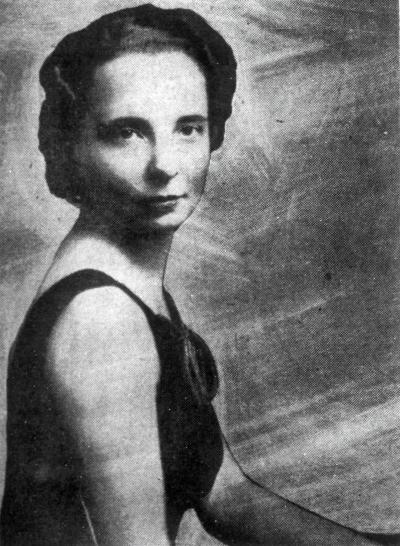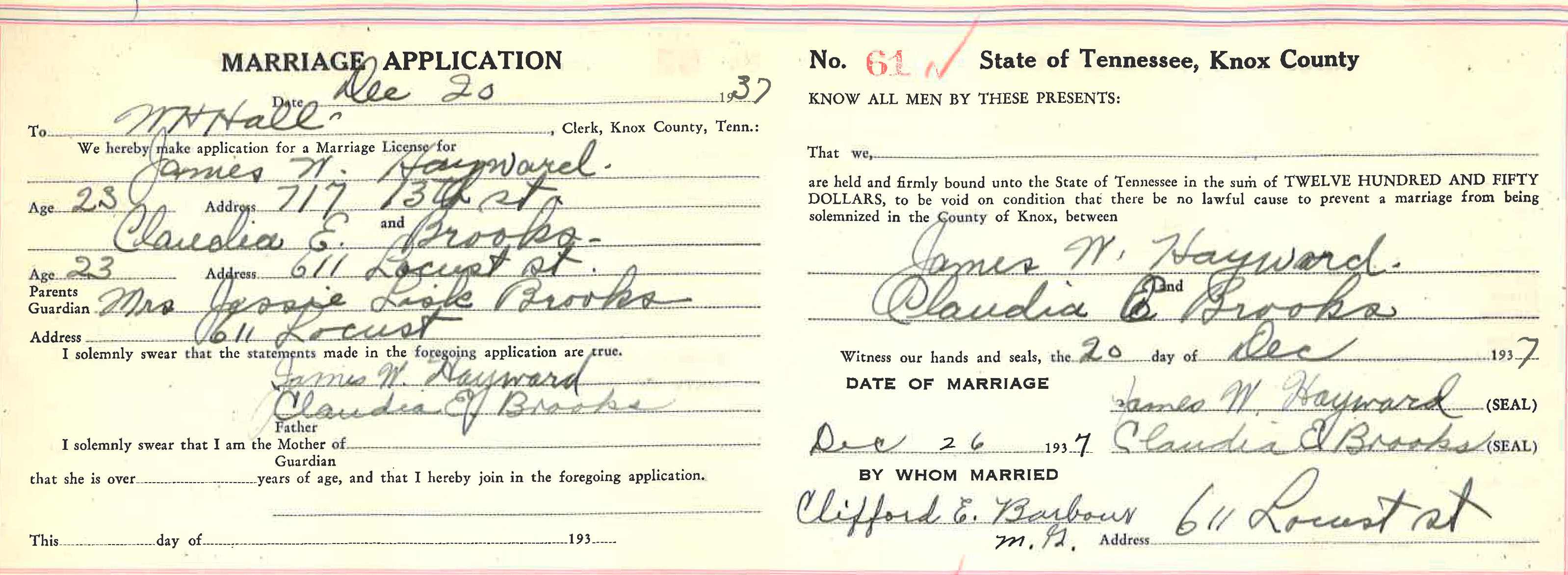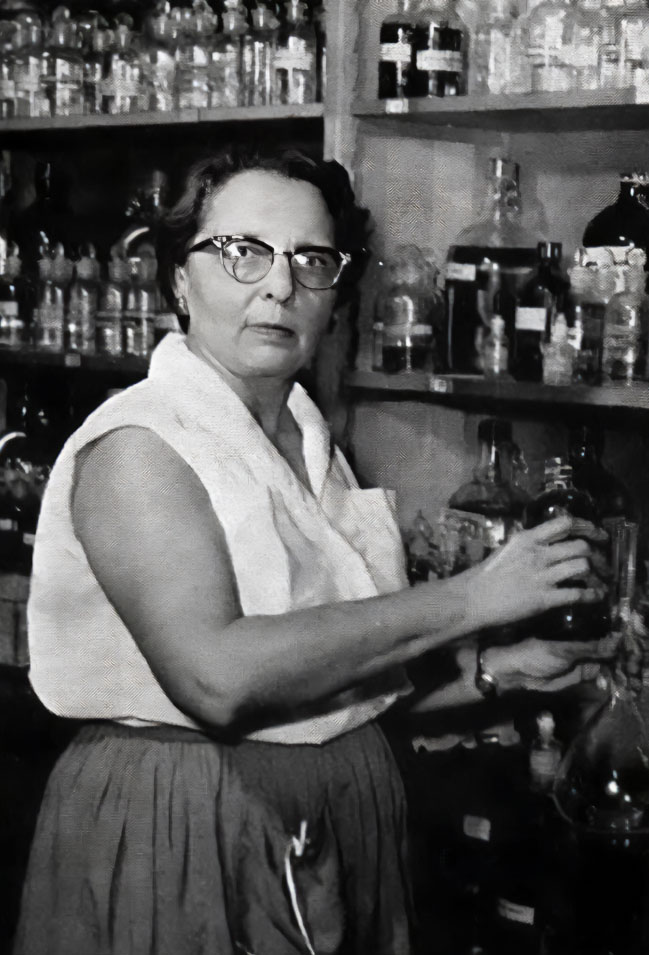
December 26, 1937, was among the happiest days of 23-year old Claudia Elizabeth Brooks’s life. Dressed in a brown tweed suit, draped in a fur coat, she walked down the aisle at Knoxville’s Second Presbyterian Church to marry her college sweetheart, James Woodruff Hayward. However, four days later, she was fired from her job as a teacher from Sequoyah School because of this act of matrimony.
Claudia Brooks was born on October 18, 1914, in Knoxville, Tennessee, to Claude Elbert Brooks and Jessie Elizabeth Lisk. After graduating from Knoxville High School in 1931, she attended the University of Tennessee (UT), where she studied chemistry and met her future husband, James Hayward. Four years later, Claudia graduated from UT and became a teacher, landing at West View School. In 1936, she taught at Giffin School in South Knoxville before joining Sequoyah in the fall of 1937. During these years of bouncing around the city school system, Brooks pursued her master’s degree in chemistry at the University of Tennessee, graduating in 1938.
Claudia received notice of her termination on January 11, 1938, in a letter from Superintendent Harry W. Clark. She phoned Clark, protesting her termination as “illegal and arbitrary.” Clark informed her that her dismissal was because of her marriage but refused to put it in writing. She continued receiving her $900 salary for the remainder of the school year, leading her to believe she was still employed, but upon request to Dr. H. E. Christenberry, chairman of the Knoxville Board of Education, he informed her that the board voted not to re-employ her for the following school year but again failed to give her a reason either verbally or in writing. Hayward, through her attorney, Charles E. Rader, filed suit in the 2nd Circuit Court of Knox County on July 14, 1938, to be reinstated for the 1938-1939 school year at her deserved salary of $950.

While there was no state law prohibiting married women from teaching, many local boards of education passed rules outlawing the practice, apparently in an effort to employ men during the Great Depression. Knoxville was no different; the board of education approved a policy on September 11, 1933, not to employ married women as teachers. What the board did not account for in their firing of Hayward was the Tennessee General Assembly’s 1937 update to the state’s civil service act, declaring that teachers with three years of service are considered tenured civil servants and thus could only be fired for specific cause.
On December 19, 1938, Judge L. H. Carlock of Knox County’s 2nd Circuit Court sided with Hayward that she was indeed a civil servant and not subject to dismissal for getting married. The city and the Knoxville Board of Education appealed to the State Supreme Court. The case was heard during the October 1939 session where Hayward was once again successful, cementing her and all other married teachers the right to ply their trade in Knox County. In addition to regaining her ability to teach, Hayward received back pay for the year missed due to her unconstitutional dismissal. Even though the Supreme Court found the policy unlawful, the Knoxville Board of Education did not formally overturn their married teacher rule until 1942, some three years after the decision.
The school board re-elected her as full-time teacher in December 1939 and she returned to the classroom that month, teaching third grade at Lonsdale School. For the 1940 school year, Hayward taught at Park City Lowry before resigning, because she and her husband moved out of state. By 1947 they lived to Houston, Texas, where Claudia taught chemistry at Bellaire High School for more than 20 years before her retirement and subsequent death in 2007. She and James had two children, John Samuel Hayward and Kathleen Elizabeth Hayward. In addition to teaching, Claudia played violin in the Knoxville Symphony and was on the rifle team at the University of Tennessee.

Research by Zachary Keith, County Archives Digital Assistant